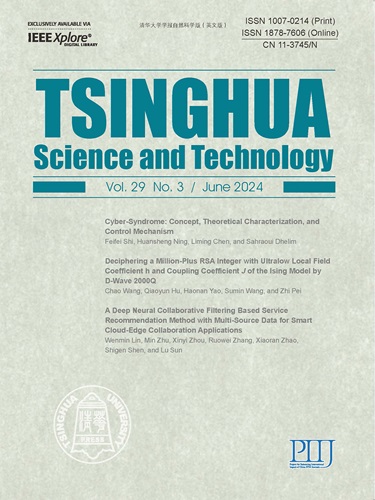Deep Learning-Based Thermal Imaging Analysis to Diagnose Abnormalities in Sports Buildings: Smart Cyber-Physical Monitoring Sensors at the Edge
IF 3.5
1区 计算机科学
Q1 Multidisciplinary
引用次数: 0
Abstract
A joint green-edge computing idea is now realized in practice with the help of intelligent infrastructure for modern sport venues, based on Internet of Things (IoT) platforms and Cyber-Physical Systems (CPS). To monitor their sports actions, athletes need smart environments. Using edge-enabled low-cost and low-power sensors, such as infrared monitoring systems that analyze thermal information, this environment should alert to possible physical damages. Early recognition of sports injuries and joint injuries can usually prevent athletes from pain and missing exercise. One of the most efficient methods for identifying pain and movement problems is to monitor the energy emitted by lower limb injuries. By analyzing thermal images of the lower body parts, this research attempts to automatically identify sports injuries. The thermal image is first isolated from the region of interest. Convolutional structures are applied to identify lesions using a newly developed and optimized method. The performance of the classifier is performed with the possibility of deep learning by pruning the features, to reduce the computational complexity and improve the accuracy, and a model has been developed based on the classification of sports injuries in binary mode (i.e., whether the lesions are present or not) and multiclass mode (i.e., the severity of sports injuries) resulted in optimal results. Thermal images show the different states of joints, including lesions caused by various sports in the lower limbs. This model could provide the ability of solving uncertainty of answers, repeatability, and convergence towards minimum error. As compared to conventional feature extraction and classification approaches, the outputs are more acceptable. By taking advantage of the K-fold cross-validation method, the average error of the proposed method to detect the severity of damage is less than 2.22%.基于深度学习的热成像分析诊断体育建筑异常:边缘的智能网络物理监测传感器
以物联网(IoT)平台和网络物理系统(CPS)为基础,借助现代体育场馆的智能基础设施,实现了联合绿色边缘计算的理念。为了监控他们的运动,运动员需要智能环境。使用边缘启用的低成本和低功耗传感器,例如分析热信息的红外监测系统,该环境应该对可能的物理损坏发出警报。早期识别运动损伤和关节损伤通常可以防止运动员疼痛和错过运动。识别疼痛和运动问题的最有效方法之一是监测下肢损伤所释放的能量。本研究试图通过分析下半身的热图像,自动识别运动损伤。首先将热图像与感兴趣的区域分离。使用一种新开发和优化的方法,将卷积结构应用于病灶识别。该分类器的性能通过对特征进行修剪来实现深度学习的可能性,以降低计算复杂度和提高准确性,并基于二元模式(即是否存在病变)和多类模式(即运动损伤的严重程度)对运动损伤进行分类,从而获得最佳结果。热图像显示关节的不同状态,包括下肢各种运动引起的病变。该模型具有求解不确定性、可重复性和收敛性等特点。与传统的特征提取和分类方法相比,该方法的输出更容易被接受。利用K-fold交叉验证方法,该方法检测损伤严重程度的平均误差小于2.22%。
本文章由计算机程序翻译,如有差异,请以英文原文为准。
求助全文
约1分钟内获得全文
求助全文
来源期刊

Tsinghua Science and Technology
COMPUTER SCIENCE, INFORMATION SYSTEMSCOMPU-COMPUTER SCIENCE, SOFTWARE ENGINEERING
CiteScore
10.20
自引率
10.60%
发文量
2340
期刊介绍:
Tsinghua Science and Technology (Tsinghua Sci Technol) started publication in 1996. It is an international academic journal sponsored by Tsinghua University and is published bimonthly. This journal aims at presenting the up-to-date scientific achievements in computer science, electronic engineering, and other IT fields. Contributions all over the world are welcome.
 求助内容:
求助内容: 应助结果提醒方式:
应助结果提醒方式:


